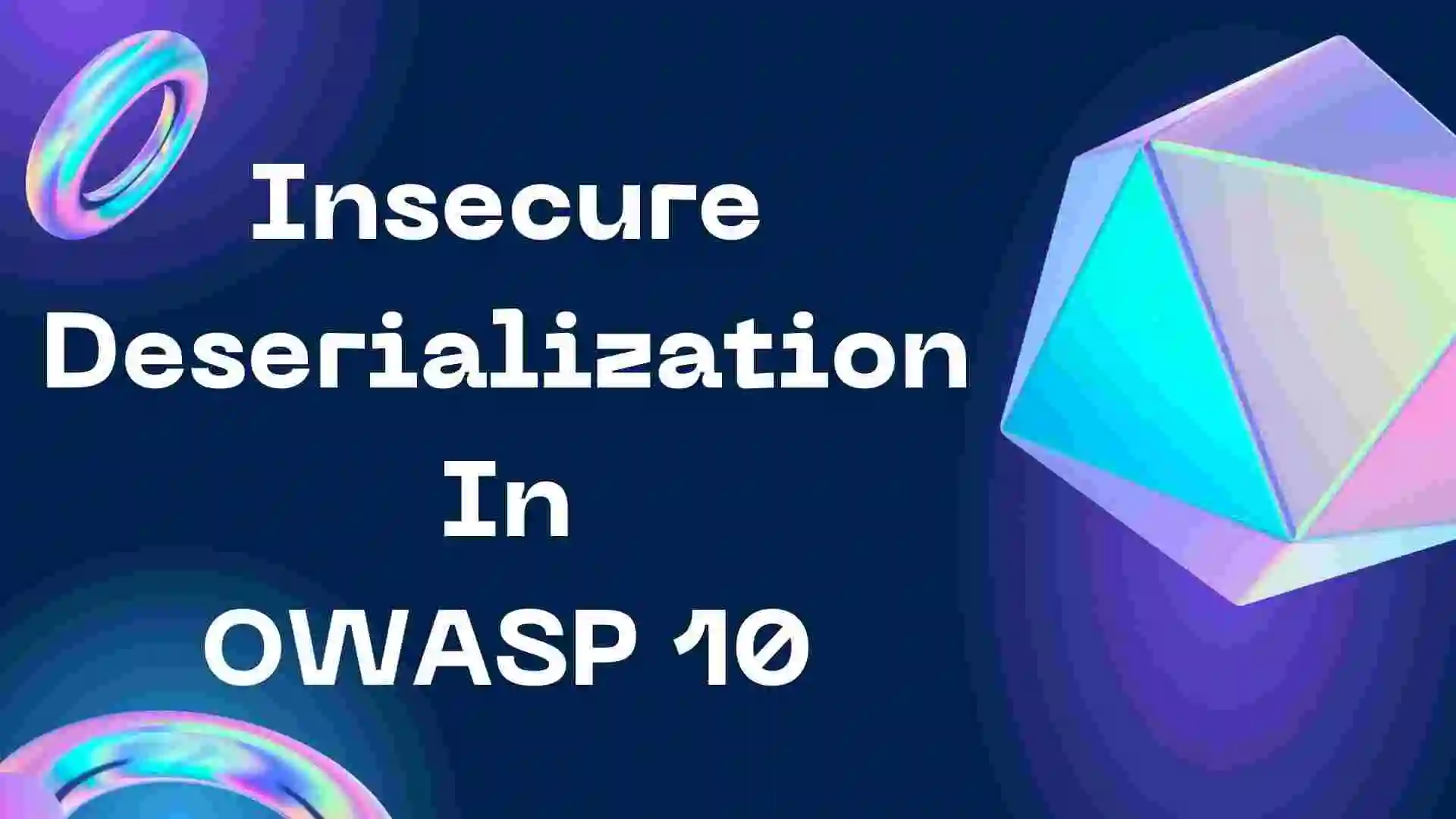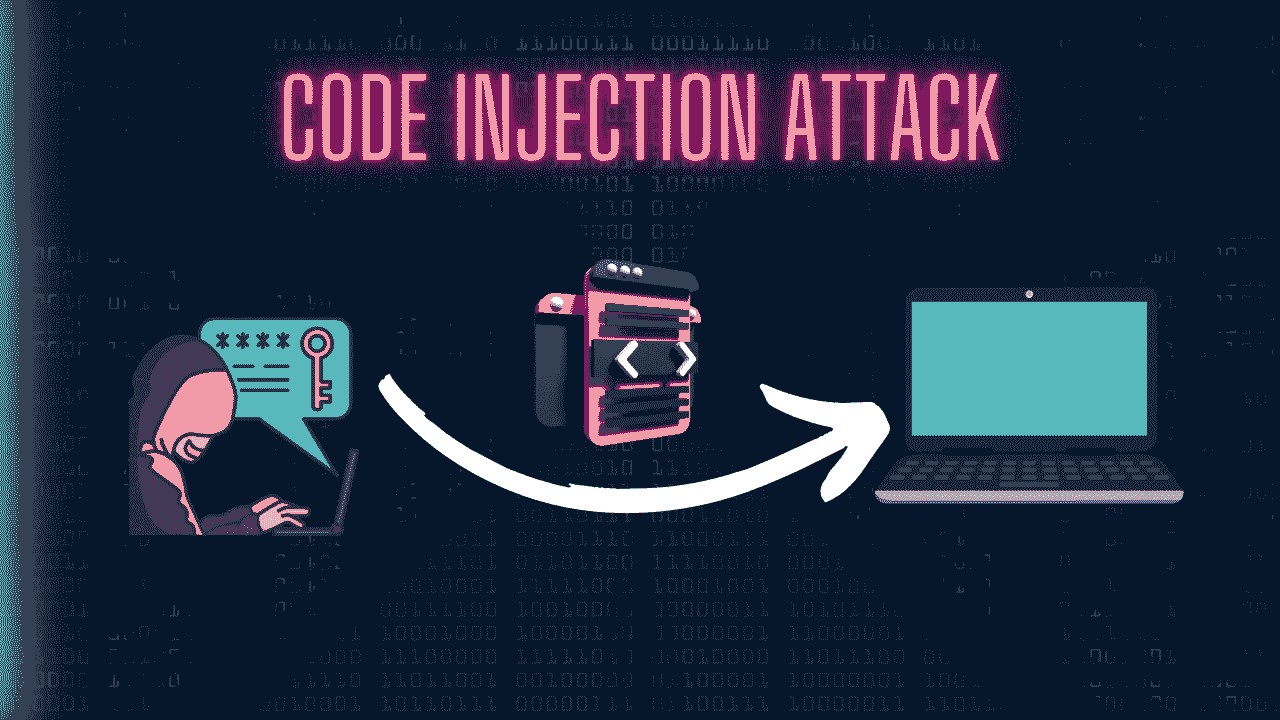In this blog, we will learn about one of the most important OWASPs i.e. Insecure Deserialization. It is one of the most important vulnerability because it can access your system if the target system is not properly handled. So let’s get started with the blog.
Table of Contents
- Introduction to Serialization
- Introduction to Deserialization
- What is Insecure Deserialization?
- How do insecure deserialization vulnerabilities arise?
- Impact of Insecure Deserialization Vulnerabilities
- Prevention of Insecure Deserialization Vulnerabilities
- Recent Articles on Computer Networks
- Recent Articles on Linux
Before learning about Deserialization, you should know about the concept of Serialization and Deserialization.
Introduction to Serialization
Serialization in ethical hacking refers to the process of converting complex data structures into a format that can be easily stored, transmitted, or reconstructed.
It is an essential aspect of many applications and is often used to transfer data between different systems or components. However, when serialization is not implemented properly, it can introduce security vulnerabilities that can be exploited by hackers.
[image]
Introduction to Deserialization
Deserialization in ethical hacking refers to the process of reconstructing serialized data back into its original form.
It is a critical aspect of many applications and is often used to receive and process data from external sources.
[image]
What is Insecure Deserialization?
Insecure deserialization refers to a vulnerability that arises when an application or system improperly handles the deserialization of untrusted or maliciously crafted data.
Deserialization is the process of reconstructing serialized data into its original form, typically to retrieve or use the information contained within it.
However, if deserialization is implemented without appropriate security measures, it can be exploited by attackers to execute unauthorized actions or compromise the system.
An exception might be brought about by an object of an unexpected class. But by then, perhaps the damage is already done.
Numerous deserialization-based attacks are finished prior to the end of deserialization. This means that even if the website’s own functionality does not directly interact with the malicious item, the deserialization process itself may start an attack.
Because of this, websites with strongly typed language-based logic may potentially be susceptible to similar tactics.
[image]
How do insecure deserialization vulnerabilities arise?
Insecure deserialization vulnerabilities can arise due to various factors and implementation flaws within an application or system. Here are some common reasons that contribute to the existence of insecure deserialization vulnerabilities:
A) Lack of Input Validation:
When deserializing data, if the application does not properly validate or sanitize the input, it can lead to vulnerabilities. Failing to validate the integrity, authenticity, and structure of the serialized data allows attackers to manipulate it, leading to potential security breaches.
B) Trusting Untrusted Data Sources:
Insecure deserialization vulnerabilities occur when applications blindly trust and deserialize data from untrusted or external sources. This includes accepting serialized data from user inputs, network communications, or other unverified channels without appropriate validation and verification.
C) Insufficient Integrity Checks:
Without proper integrity checks, the application cannot verify whether the serialized data has been tampered with or modified. Attackers can exploit this lack of validation to manipulate the serialized data, potentially leading to security breaches or unauthorized code execution.
D) Inadequate Access Control:
Insecure deserialization vulnerabilities can arise when deserialization processes are not properly restricted or subject to access controls. If untrusted users or unprivileged parts of the application can trigger deserialization operations, it increases the attack surface and potential for exploitation.
E) Use of Vulnerable or Outdated Libraries:
Insecure deserialization vulnerabilities can be introduced by using outdated or vulnerable deserialization libraries or frameworks. Older versions of these libraries might lack security patches or be susceptible to known vulnerabilities, making them an attractive target for attackers.
F) Malicious Payloads:
Attackers can deliberately craft serialized data with malicious payloads, such as code snippets or objects designed to execute arbitrary commands when deserialized. These payloads can exploit weaknesses in the deserialization process to achieve unauthorized access or perform other malicious actions.
To mitigate insecure deserialization vulnerabilities, it is important to address these issues through secure coding practices and rigorous security testing.
This includes implementing proper input validation, validating data integrity, using secure deserialization libraries, enforcing access controls, and keeping software dependencies up to date with security patches. Regular security assessments, such as penetration testing and code reviews, are also essential to identify and remediate insecure deserialization vulnerabilities.
Impact of Insecure Deserialization Vulnerabilities
Insecure deserialization vulnerabilities can have significant impacts on the security and functionality of an application or system. These vulnerabilities can be exploited by attackers to carry out various malicious activities, leading to serious consequences. Here are some potential impacts of insecure deserialization vulnerabilities:
A) Remote Code Execution (RCE):
One of the most severe consequences of insecure deserialization is the potential for remote code execution. Attackers can manipulate serialized data to include malicious code or objects. When the data is deserialized, the code is executed within the application’s context, allowing attackers to take control of the system, run arbitrary commands, and potentially gain unauthorized access.
B) Unauthorized Access and Privilege Escalation:
Insecure deserialization can lead to unauthorized access to sensitive data or functionalities. By tampering with serialized data, attackers can bypass access controls, gain elevated privileges, and escalate their permissions within the application or system. This can result in data breaches, unauthorized actions, or compromise of sensitive information.
C) Data Integrity and Confidentiality Breaches:
Insecure deserialization can lead to data integrity and confidentiality breaches. Attackers can modify the serialized data to tamper with critical information, inject malicious content, or manipulate the application’s behavior. This can result in data corruption, unauthorized modifications, or leakage of sensitive data.
D) Malware Propagation:
In some cases, insecure deserialization vulnerabilities can be leveraged to propagate malware or enable lateral movement within a network. By exploiting deserialization flaws, attackers can execute malicious code or payload that triggers the download and execution of additional malware, compromising other systems or spreading the attack further.
Prevention of Insecure Deserialization Vulnerabilities
Here are some preventive measures to mitigate insecure deserialization vulnerabilities:
A) Input Validation:
Implement robust input validation for serialized data. Validate and sanitize the input to ensure it meets expected criteria, such as data types, size limits, and format constraints. Reject or handle invalid or unexpected input appropriately.
B) Secure Deserialization Libraries:
Utilize well-established and secure deserialization libraries or frameworks that have built-in protections against insecure deserialization vulnerabilities. Stay up to date with the latest versions of these libraries, as they often include security patches for known vulnerabilities.
C) Secure Configuration:
Review and configure deserialization options appropriately based on the security requirements of the application. Disable or remove unnecessary deserialization features or serializers to minimize the attack surface.
D) Security Testing:
Regularly perform security assessments, including penetration testing, fuzzing, and code review, to identify and remediate insecure deserialization vulnerabilities. Test serialized data with various payloads and edge cases to ensure proper handling and protection against potential attacks.
E) Patch Management:
Stay updated with security patches for all software dependencies, including deserialization libraries and frameworks. Regularly check for security advisories and promptly apply patches to mitigate known vulnerabilities
Recent Articles on Computer Networks
- Introduction to Computer Networking | What is Computer Network
- What are Topology & Types of Topology in Computer Network
- What is FootPrinting in Cyber Security and its Types, Purpose
- Introduction to Cloud Computing | What is Cloud Computing
- Distributed Shared Memory and its advantages and Disadvantages
- What is VPN? How doe VPN Work? What VPN should I use?
- What is an Internet and How the Internet Works
- What is a Website and How Does a Website or web work?
- Introduction to Virus and different types of Viruses in Computer
- What is TCP and its Types and What is TCP three-way Handshake
- What is UDP Protocol? How does it work and what are its advantages?
- What is an IP and its Functions, What is IPv4 and IPv6 Address
- What is MAC Address and its Types and Difference MAC vs IP
- What is ARP and its Types? How Does it Work and ARP Format
- Sessions and Cookies and the Difference Between Them
- What is ICMP Protocol and its Message Format?
- What is Big Data? Characteristics and Types of Big Data
- Disciplines of CyberSecurity | What are the goals of CyberSecurity?
- What is Firewall, Features, Types and How does the Firewall Work?
- Network Scanning, Types, and Stealth Scan in Computer Network
- Cryptography and its Types in Ethical Hacking
- Tor Browser and How does it Work | Onion Router Tutorial
- Proxy Server, Advantages, Difference between Proxy Server & VPN
Recent Articles on Linux
- What is Linux Operating System | Introduction to Linux
- Directory in Linux Define | Linux Directory & its Commands
- Explain the chmod command in Linux | Linux chmod command
- Linux User Management || User Management in Linux
- Linux Computer Network Advanced Command | Network Command
- Redirection in Linux I/O| Linux I/O Redirection
- CronTab and Job Scheduling in Linux | Make CronTab Project
- Linux Firewall Unlock Rules with Firewall-cmd Tutorial
- netstat command in Linux | Linux netstat command
- SSH Command Full Guide with Practical | Linux SSH Service



